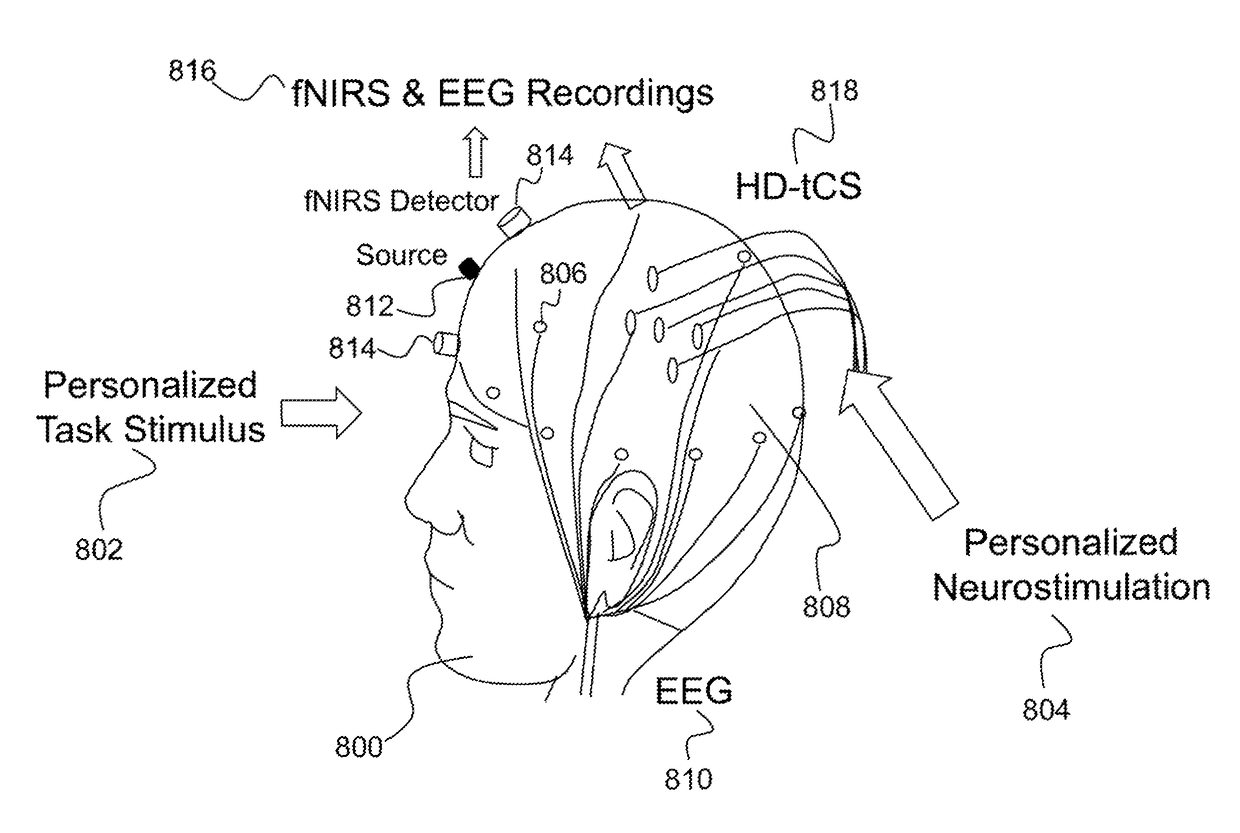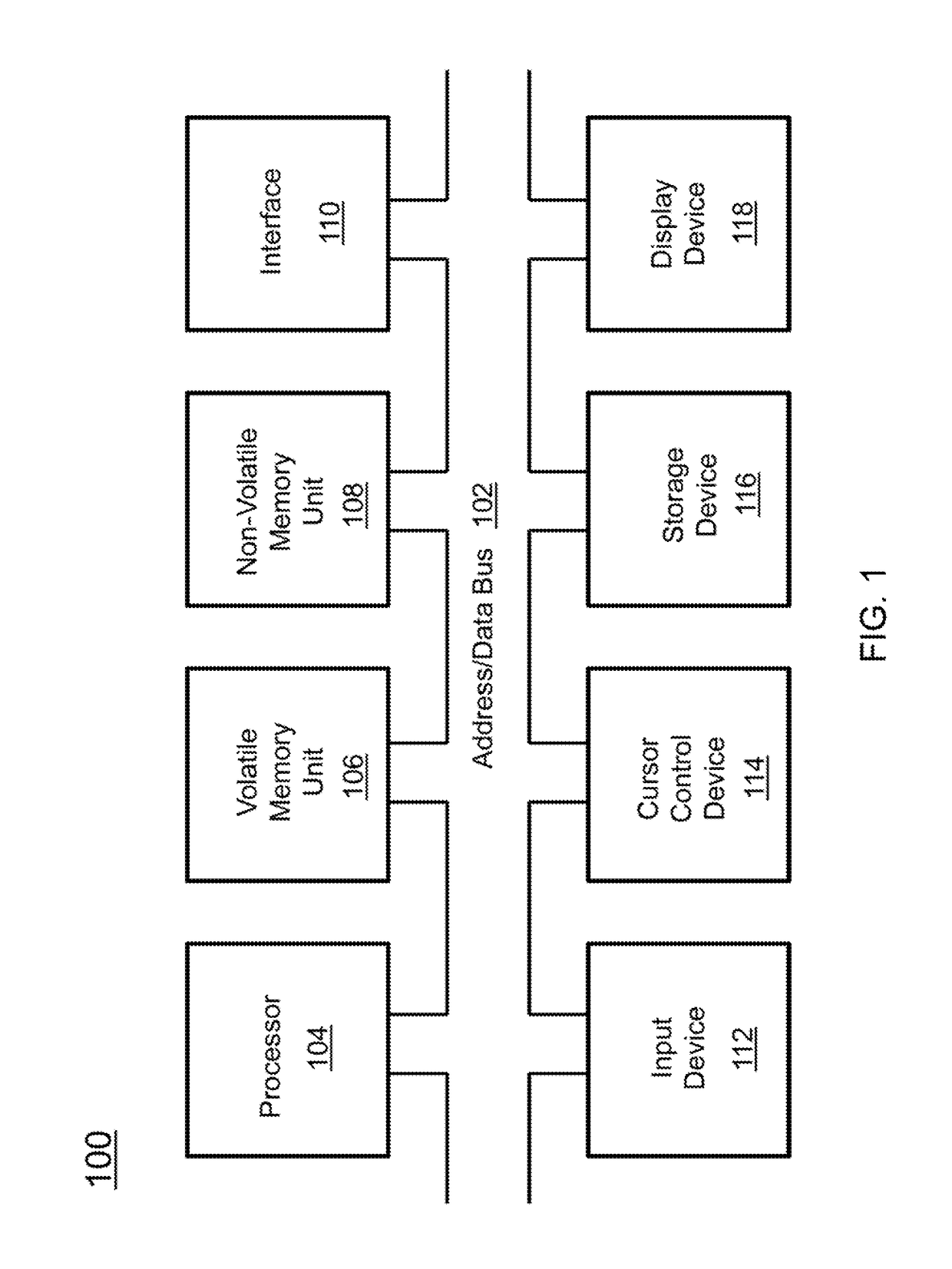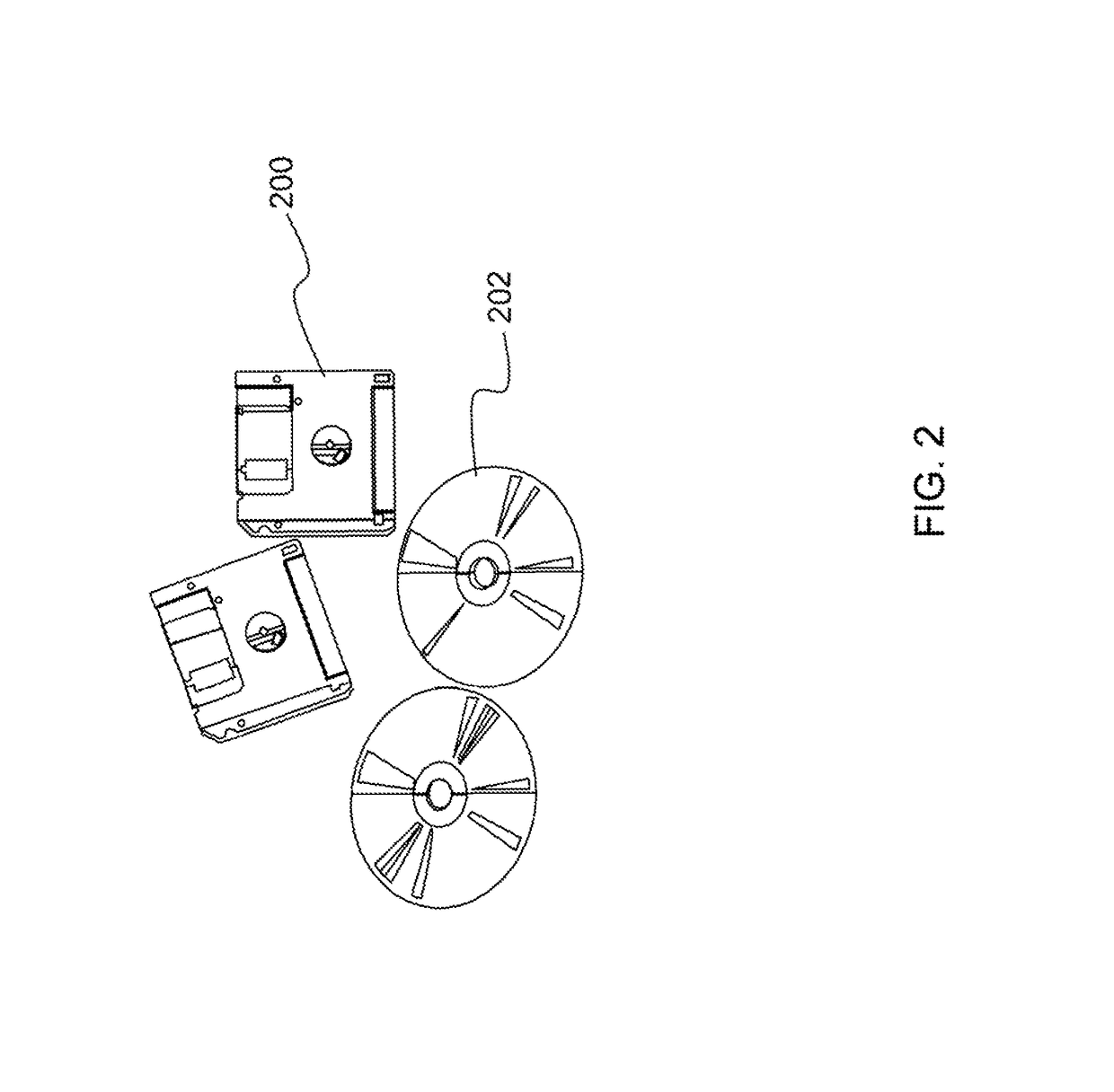Thinking cap: combining personalized, model-driven, and adaptive high definition trans-cranial stimulation (HD-tCS) with functional near-infrared spectroscopy (fNIRS) and electroencephalography (EEG) brain state measurement and feedback
a high-definition, brain state measurement and feedback technology, applied in the field of system for mapping user behavior to brain regions of interest, can solve the problems of ineffective current flow through approximately half of the brain, inability to focus on conventional two-electrode neurostimulation, and inability to integrate real-time, closed-loop, multi-modal sensing for directing neurostimulation. , the effect of hd-tdcs and adaptive models
- Summary
- Abstract
- Description
- Claims
- Application Information
AI Technical Summary
Benefits of technology
Problems solved by technology
Method used
Image
Examples
Embodiment Construction
[0029]The present invention relates to a system for mapping user behavior to brain regions of interest and, more particularly, to a system for mapping user behavior to brain regions of interest using a combination of cognitive-behavioral and functional-anatomical modeling. The following description is presented to enable one of ordinary skill in the art to make and use the invention and to incorporate it in the context of particular applications. Various modifications, as well as a variety of uses in different applications will be readily apparent to those skilled in the art, and the general principles defined herein may be applied to a wide range of aspects. Thus, the present invention is not intended to be limited to the aspects presented, but is to be accorded the widest scope consistent with the principles and novel features disclosed herein.
[0030]In the following detailed description, numerous specific details are set forth in order to provide a more thorough understanding of t...
PUM
 Login to View More
Login to View More Abstract
Description
Claims
Application Information
 Login to View More
Login to View More - R&D
- Intellectual Property
- Life Sciences
- Materials
- Tech Scout
- Unparalleled Data Quality
- Higher Quality Content
- 60% Fewer Hallucinations
Browse by: Latest US Patents, China's latest patents, Technical Efficacy Thesaurus, Application Domain, Technology Topic, Popular Technical Reports.
© 2025 PatSnap. All rights reserved.Legal|Privacy policy|Modern Slavery Act Transparency Statement|Sitemap|About US| Contact US: help@patsnap.com



